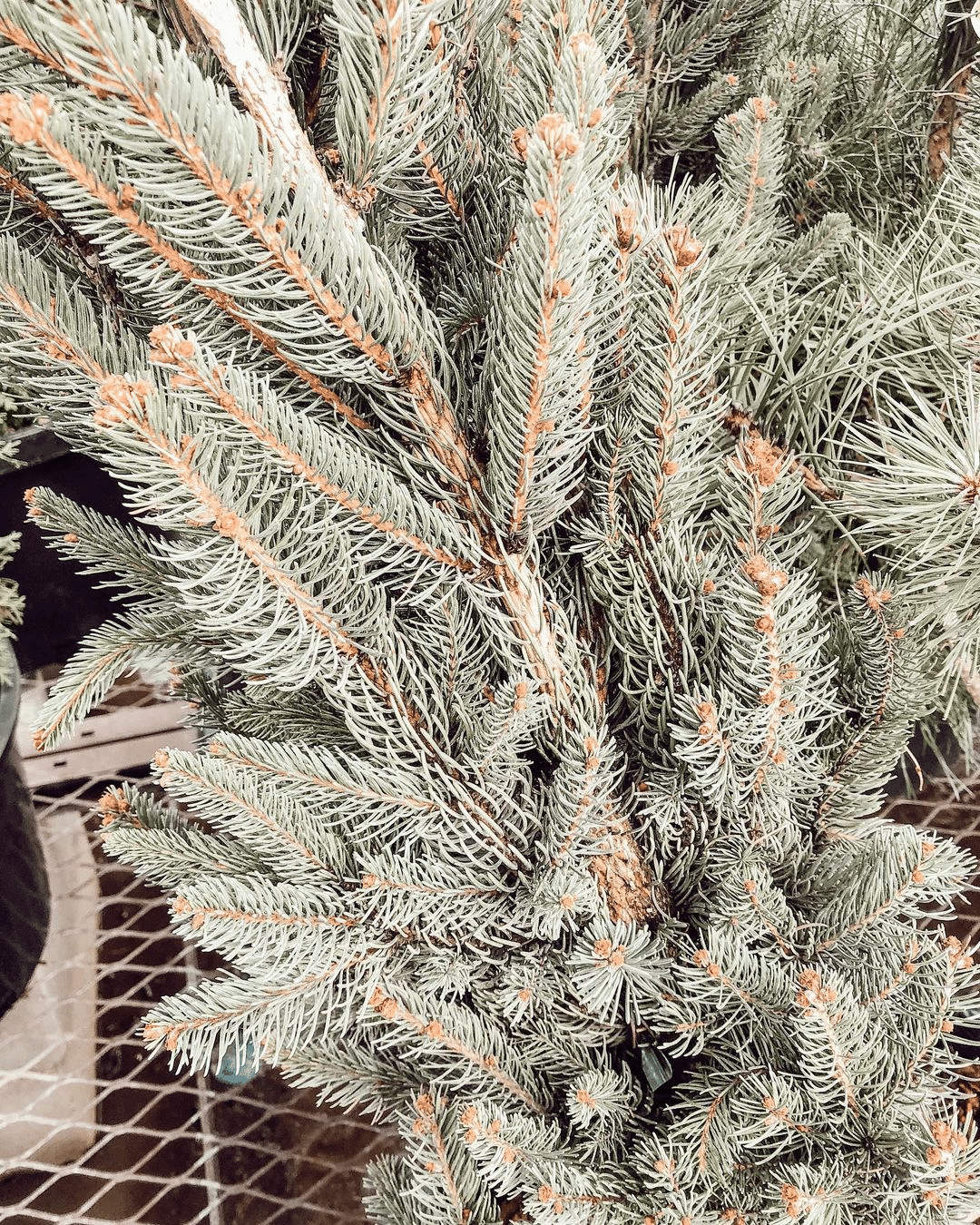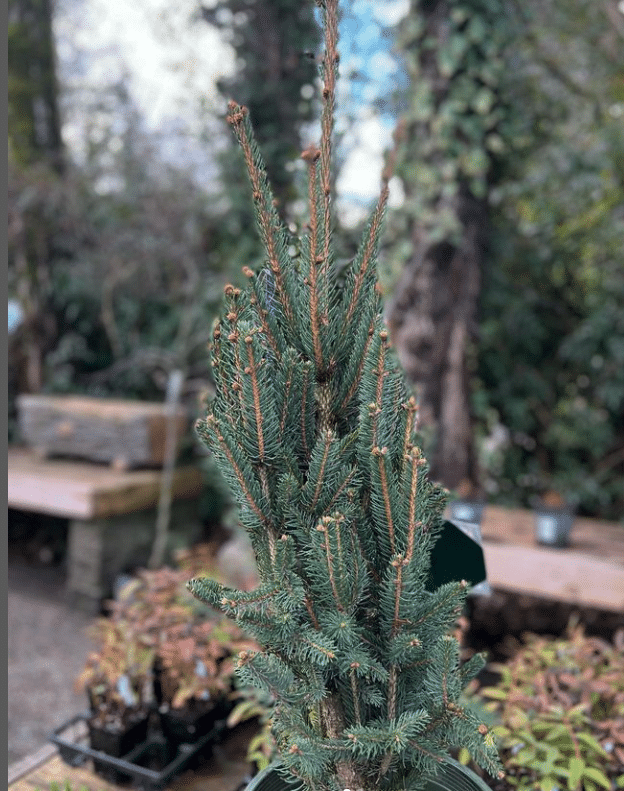Columnar Norway Spruce may serve as a stunning vertical accent and adds height to your landscape, but a little human intervention for care is a must to keep up their elegance.
Follow along to learn in detail about this immensely popular landscaping tree and how you can easily host them in your garden.
Table of Contents Show
Columnar Norway Spruce: Overview
The Columnar Norway Spruce (Picea abies ‘Cupressina’) is an evergreen ornamental known for its narrow structure.
As they are evergreen, these trees will not shed their leaves and persist in your garden for several years once planted in the spring.
Native to Europe and Asia, these plants boast needle-like leaves modified to survive the cold.

They are found growing in mixed forests with other conifers, such as Pines and Firs. You can also see them growing in the mountainous region as they are super cold and hardy.
Moreover, belonging to the Spruce family, the Columnar Norway Spruce share the family with Black Weeping Colorado Spruce.
How Do You Grow A Columnar Norway Spruce?
Columnar Norway Spruce are among the easy-to-grow plants thriving in minimum care.
They are hardy plants that can survive in most conditions with little attention to watering, light, temperature, and nutrient.
1. Sunlight And Temperature
The Columnar Norway Spruce prefers full sunlight but can tolerate some shade at moderate temperatures.
These plants are hardy to both the cold winters and hot summers, so you can grow them from Zone 2 to Zone 7.
Also, the tender trees and young branches may not be able to withstand the temperature drop below -20°F.
Due to this, you may need to provide winter protection like burlap covers to help the young sapling survive the harsh winter frost.
Further, excess sunlight and high temperatures cause the leaves to scorch and stress the plant leaving crisp, dry foliage.
So, make sure you decide on a location that receives afternoon shade to protect the plant from sunburn.
2. Watering & Humidity
Provide consistent watering to the plant during its first year after planting, aiming for ample moisture in the rootballs, with the air moisture maintained the 40-50%.
This promotes better establishment of roots pushing the entire plant growth.
Gradually as the plant grows, Columnar Norway Spruce will not need as much water. But, while limiting the irrigation, you may parch the soil and dehydrate the plant.
Further, the outdoor Spruce tree naturally adapts to varying humidity levels.
While you may not need to put a lot of hardwood in your garden Norway Spruce, getting a humidifier is essential for the indoors want.
3. Soli & Nutrients
When it comes to the soil requirement of the Columnar Spruce, they can grow in a wide range of soil as long as they facilitate proper drainage yet hold ample moisture.
But they do their best in well-draining, loamy acidic soil rich in nutrients with a pH of 6.0-6.5.

Commercials are pre-enriched with nutrients, so do not add extra fertilizer, or you may end up burning the roots of the tree.
Besides, apply a dose of slow-release balanced fertilizer only after the first 6 months to push the young trees’ growth.
Nonetheless, these varieties of Spruce are less demanding for fertilizer and tend to suffice the nutrient need from the soil.
4. Potting & Repotting
Like any other Norway Spruce varieties, you can grow the Columnar either in a pot or directly on the ground.
Meanwhile, you need to choose a 15-inches pot for the plant but ensure they have enough drain holes. If not, drill a few.
Keep an eye on the tree’s root system. If you notice the roots circling inside the pot or are getting dense, you have to repot them.
Even in normal and healthy conditions, you must repot the tree every 2-3 years in a 2-3 inches bigger pot. This allows the roots to have proper growing space.
Moreover, the best time to repot the Columnar Norway Spruce is in the early spring before the new growth begins.
Pro Tip: Make sure not to prune more than 1/3rd of your plant or else you will end up stressing them.
5. Minimal Pruning
To keep the plant in its best health and overall appearance, you can prune the Columnar Norway spruce annually.
Removing the dead and dry branches helps with the plant’s air circulation and light penetration.
Further, pruning becomes mandatory if you notice pests like aphids, spider mites, and weevils start nibbling on the foliage.
But first, try using neem oil to control the pest population.
Moreover, pruning the plant can help manage the upright form and host them in the intended space.
How Big Does A Columnar Norway Spruce Get? [Growth Habits]
Adored for its upright narrow growth habits, Columnar Norway Spruce has unique columnar growth habits.
Its petite and slender size makes it a perfect choice for landscaping in tiny spaces.

They are well suited for privacy screens or as a windbreak, so preferred by celebrities like Jenna Ortega and Jennifer Lopez.
However, upon sufficing the proper care requirement, they can even grow to a height of 50 feet, boasting its dark green needle-like structure leaves.
Further, unlike most Spruce trees, the Columnar Norway Spruce produces cones instead of flowers. Cones are brown or reddish-brown when mature and contain seeds that can be dispersed by wind.
From Editorial Team
Apply Mulch Around The Base!
Weeds growing around your Norway Tree base degrades your plant’s aesthetics.
While pulling them could be daunting, apply a layer of mulch to suppress the weed growth.
Not just weed control, mulch helps conserve soil moisture and regulate temperature for better growth.


